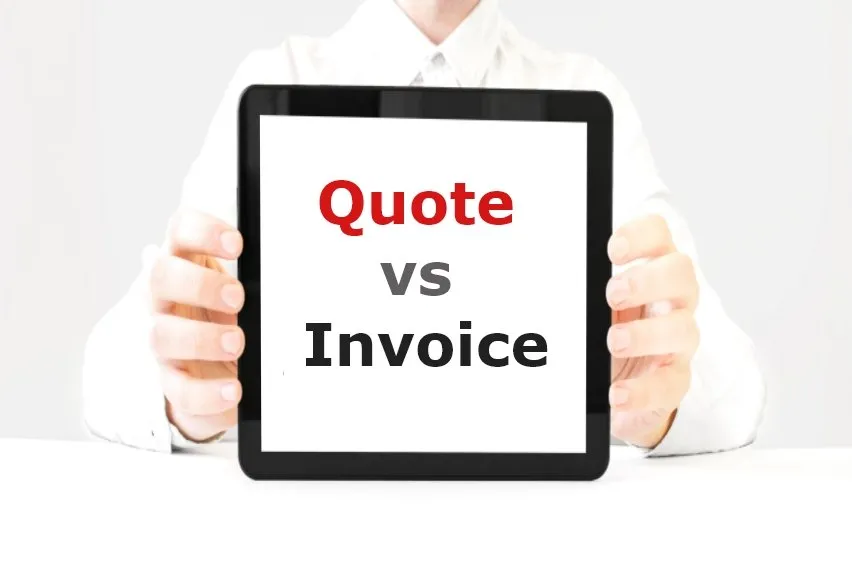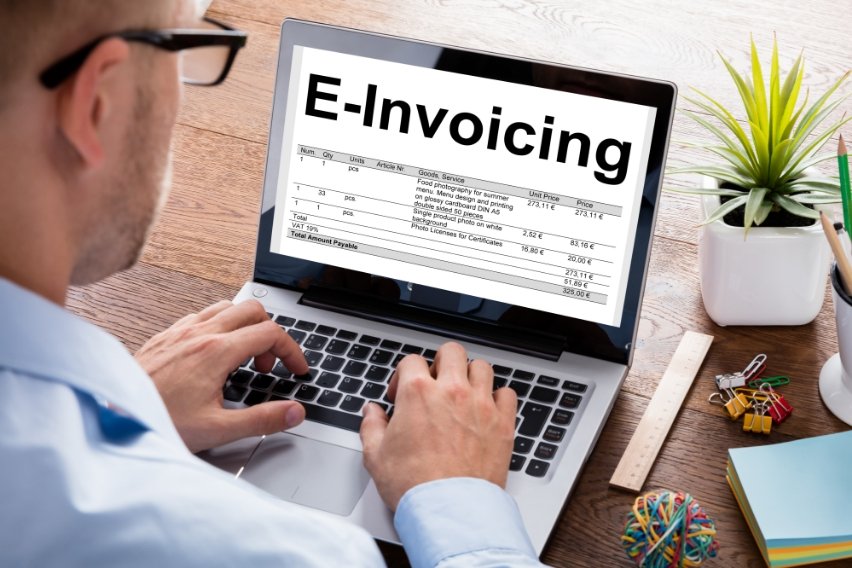Quote vs Invoice: What’s the Difference?

People often confuse quotes and invoices because their functions are very similar. Both quotes and invoices help a business or person who rendered a service get paid.
Nevertheless, quotes and invoices have several key differences regarding methodologies and timing. When running a business, knowing when and how to use quotes and invoices to manage your operations is crucial. Keep reading to learn everything you need to know.
Table of Contents
What’s Included in an Invoice?
How Does the Invoice Process Work?
What Is a Quote?
A quote is a commercial document that a company issues to a potential client. It notifies the buyer of the prices for the seller’s goods or services.
Quotes are non-binding agreements and may vary from one client to another. When you forward a quote to a customer, it’s up to them to take up the offer or to take their business elsewhere. If the client accepts the prices offered, the seller should stick to their original terms.
All quotes should include a validation date. This way, the seller can make alterations and negotiate with the customer on future agreements.
Types of Quotes
There are two primary categories for quotes: estimates and detailed cost breakdowns. As the name suggests, estimates are more flexible and don’t list every type of cost. On the other hand, detailed breakdowns are more formal quotes and provide a comprehensive summary of all the costs involved.
Product Quotes
A product quote is a written document sent by the seller to the client that shows the cost of products purchased from that seller. In addition, it may list quantities, charges, terms of use, and other pertinent details related to the transaction.
Service Quotes
A service quote is a document that explains the basic terms and conditions delivered by the service provider to the customer. This requires a mutual agreement. It usually includes estimates of the charges for those services and may or may not give a detailed breakdown of individual costs.
When Are Quotes Used?
Sellers use quotes to inform potential clients about the charges for their services or products. This process happens at the beginning of a business relationship when the customer is shopping around to find the best deals in the market. Since a quote is not a binding agreement, the customer has the full right to accept or refuse the offer.
When a customer wants to know the price of a company’s goods or services, the company sends them a quote. The details should always be double-checked because once the client accepts, the terms become fixed. The seller is then obligated to provide the services at the quoted prices. One may only make changes after the expiration of the quote’s validity.
Tips for Preparing Quotes
Use a Template
Many different items go into an official quote, and you don’t want to leave anything out. Using a template removes the margin for error and saves time and energy. It also formats the quote in a professional, presentable way.
Proofreading Is Crucial
Neither party wants to be on the hook for something they can’t afford. One keystroke is the difference between 100 and 1,000. Also, errors in the numbers, spelling, or grammar can speak to the client regarding professionalism.
Add the Details
Don’t just quote the customer $5,000 for drywall replacement. Instead, let them know where the money is going. How much is labour? How much for materials? Adding those details will give peace of mind and a better chance of a successful deal.
Benefits of Providing a Quote
Establishes Trust
Receiving an official price quote lets the customer know what they are getting into. This benefits both parties by providing a transparent start to the relationship.
Keeps Everyone on the Same Page
After the client accepts the seller’s quote, everyone is on equal footing. The provider cannot charge extra for something both parties agreed on. And the client cannot request further discounts or additional services. In addition, quotes ensure that both parties understand the terms of their agreement.
Provides Legal Protection
Suppose a situation arises where the client refuses to pay, or the business fails to deliver its products after accepting payment. In that case, a signed quotation can help the wronged party pursue legal action. It provides proof that the other party agreed to certain terms and conditions.
What Is an Invoice?
An invoice is a document sent by a business or service provider to a client for the purpose of collecting payment owed. They can occur in either paper or digital format.
An invoice is a straightforward document that outlines the particulars of a business transaction. For example, it includes details of the parties involved, products or services rendered, and the final costs.
If you have already settled the total bill, the invoice can act as a bill of receipt. However, in many cases, the goods are delivered on credit. In this situation, the invoice provides payment terms. And it often includes instructions for transferring money to the seller’s account.
What Is an Invoice Used For?
One primary use of an invoice is for bookkeeping purposes. It helps both buyers and sellers to keep their finances organised. For the seller, invoices are crucial for keeping track of incoming cash flow. Likewise, it helps the buyer keep track of outgoing cash flow and accounts payable. Invoices are also useful when taking stock of inventory.
Another primary use is to ensure that sellers receive payment from their clients in a timely manner. When a seller sends a dated invoice with payment terms, it’s a physical reminder to the customer that they owe the seller money. It also helps the client understand how to submit payment. Without invoices, businesses might struggle to collect payments from their customers.
What’s Included in an Invoice?
There are several things that professional invoice documents should always have, including:
- The full legal names of both parties, including their contact information
- An invoice number that both parties can reference
- The date of product delivery and the date one sent the invoice
- A list of products or services rendered
- The total amount due
- The due date
Depending on the invoice type, it may also include payment terms, terms and conditions, tax rates, discounts, or a personalised note. If you’re a business owner, consider using invoice software with templates. The software will prompt you for important info and can generate a professional invoice in just a few clicks.
How Does the Invoice Process Work?
Once you deliver an invoice to a client, several steps remain before payment for the invoice. These include:
- The accounts department should find out whether the goods were properly delivered and accounted for
- Next, they will check to ensure that the amount billed matches the purchase order
- If there are any discrepancies, the client should contact the supplier to resolve the issue before issuing the payment
- If the invoice matches the delivered goods or services, the respective department head can approve it
- Finally, you can schedule the approved payment according to the due date and terms of the original agreement
In some cases, early invoice payments come with incentives such as discounts. So, the payment schedule varies from seller to seller.
Benefits of Using Invoices
Helps Business Analytics
Since invoices are a record of a company’s financial transactions, the included data can provide significant insights. For example, businesses can use invoices to analyse which products sell the best and to which customers. This can be beneficial for identifying consumer trends and determining strategies moving forward.
Makes You Audit-Proof
Keeping detailed invoices and accurate pricing records makes tax filing season a breeze. Moreover, any disputes can be promptly solved in case of an audit because the transaction data is easily accessible.
Keeps You Legally Secure
Like quotes, invoices can offer both parties a good deal of legal protection. Signed documents can protect an entity if a conflict arises and also serve as a deterrent to prevent such conflicts from occurring.
Key Takeaways
The main difference between a quote and an invoice is that a quote is an offer to provide a product or service for a set price. In contrast, one sends an invoice to collect the amount that has been previously agreed upon.
To run a successful business, it’s critical to understand how to create, send, and follow up on quotes and invoices. These are integral tools for making sales. You should treat them with care.
If in doubt, contact a certified accountant and ask them to walk you through the quotation and invoicing process.
FAQ on Invoices vs. Quotes
Can an Invoice Be Used as a Quotation?
Since you send an invoice only after accepting terms, you cannot use it in the same way as a quote. If a service provider sends a price quote, it means they haven’t signed or agreed on anything. Likewise, you cannot bill a customer through an invoice.
Should I Send a Quote or an Invoice?
That depends on where you are in the negotiation process. For example, send a quote if you are still discussing a potential business opportunity. On the other hand, if you have already agreed to terms and have sent or are shipping goods or services to the client, send a sales invoice.
What Is the Difference Between a Proforma Invoice and a Quote?
People generally send a quote before an agreement so the service provider and client know the prices for a service.
A proforma invoice is more like a good-faith agreement. Here, both parties have tentatively agreed to certain terms, but it is not a binding contract. Sellers or service providers send a proforma final invoice before confirming the sale. This way, they can outline the agreed-upon deliverables.
What Is the Difference Between a Quote and a Contract?
A contract is when both parties have agreed to the stipulations and have signed a legally-binding document. On the other hand, a quote is merely a summary of the terms of a potential business agreement and is not legally binding.
RELATED ARTICLES



 What is E-Invoicing? Process, Uses & Benefits
What is E-Invoicing? Process, Uses & Benefits 10 Best Invoicing Software for Small Businesses
10 Best Invoicing Software for Small Businesses How to Write a Business Proposal (10 Easy Steps)
How to Write a Business Proposal (10 Easy Steps) 5 Best Small Business Accounting Software
5 Best Small Business Accounting Software